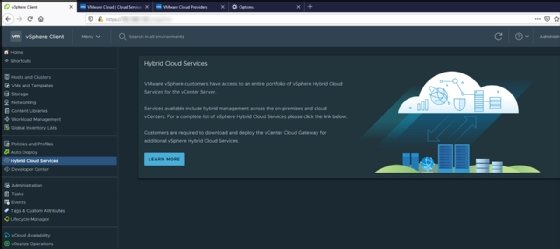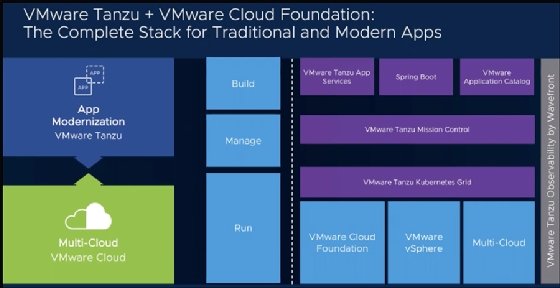
Sergey Nivens - Fotolia
What's new with VCF 4.0?
The latest major release of VMware Cloud Foundation features more integration with Kubernetes, which means easier container orchestration for your vSphere environment.
Version 4.0 of VMware Cloud Foundation enables clients to deploy and use Kubernetes and containers within the same familiar web-based vSphere user interface. The new release features a complete set of software tools and software-defined services for compute, storage, network and security, together with cloud management capabilities.
VCF 4.0's Kubernetes integrations enable closer collaboration between data center admins and DevOps teams. Developers can now deploy and update apps more quickly and efficiently, and admins can deliver and configure the supporting infrastructure faster and with more control and security.
With the new version, you can use the same UI to manage both VMs and containers. VCF's main software-defined data center, or SDDC Manager, performs admin tasks on the VCF system. SDDC Manager provides users with an integrated view of the physical and virtual infrastructure via a web-based dashboard.
Key components of VCF 4.0
VCF 4.0's main components include the following:
SDDC Manager 4.0. SDDC Manager is the main deployment tool within VCF 4.0. With it, you can deploy and configure all the other VCF components. It also automates the system and its lifecycle, from configuration and provisioning to upgrades and patching.
Cloud Builder 4.0. The Cloud Builder appliance validates network settings, such as DNS, VLANs and IP addresses, as well as user credentials.
VSphere 7.0. VSphere is the base building block of any VMware system. VMware redesigned and rearchitected it this past year to build Kubernetes natively into its core. However, the built-in Kubernetes engine only works if you have VCF licensing.
VSAN 7.0. VSAN enables you to use local HDDs and SSDs in each server within your cluster to transform it into fully redundant shared storage. VSAN 7.0 is software-defined storage that now includes simplified lifecycle support and native file services for Kubernetes clusters.
VRealize 8.1. VRealize Operations 8.1 provides users with the self-driving operations for VM and container workloads on vSphere. It includes components such as:
- vRealize Automation 8.1
- vRealize Log Insight 8.1
- vRealize Operations Manager 8.1
- vRealize Lifecycle Manager 8.1
NSX-T. NSX-T has replaced NSX-V as VMware's primary software-defined networking product.
VCF 4 with Tanzu
When running Kubernetes across different platforms and environments, the management can become difficult. VMware introduced Tanzu Kubernetes Grid to help users with installation and management of a multi-cluster Kubernetes environment. VMware Tanzu Kubernetes Grid has several built-in open source technologies that help provision and support Kubernetes environments, and VCF 4.0 integrates with Tanzu Kubernetes Grid in a deployment called VCF 4 with Tanzu.
VCF 4 with Tanzu includes Tanzu Runtime Services, the core Kubernetes development service featured in Tanzu Kubernetes Grid. It also includes Hybrid Cloud Services for Kubernetes -- a built-in container orchestration service which enables full Kubernetes API access, including the infrastructure-as-code APIs used by vRealize Automation.

VCF licensing and deployment
VMware includes Kubernetes services in VCF 4.0 Standard, Advanced and Enterprise editions. VCF Starter edition does not include vSphere 7.0 with Kubernetes.
You can purchase VCF directly from VMware, from VMware channel partners or as an integrated system from OEM vendors. You can also get VCF 4.0 as a subscription service from public cloud service providers.

VCF can internally manage the underlying components of your vSphere system, such as vRealize Suite. VCF 4.0 supports automated deployment for vRealize Suite Lifecycle Manager, which, in turn, deploys underlying vRealize components.
VMware provides documentation to let you deploy VCF 4.0 yourself; however, VMware recommends working with VMware Professional Services or your solution provider.
Note: Since the release of vSphere 7.0 Update 1, customers can run vSphere with Tanzu Kubernetes clusters on vSphere without licensing VCF as a requirement. This still does not offer all the same services available with VCF, but it makes Kubernetes available to more clients.






